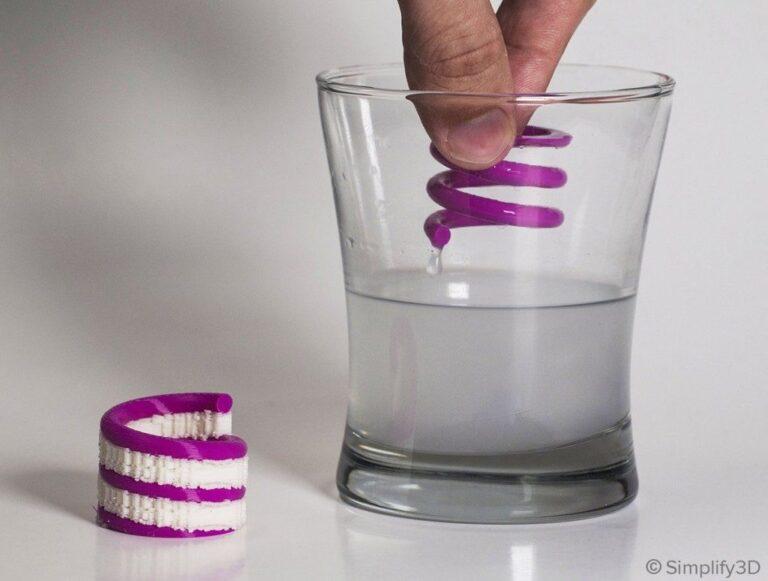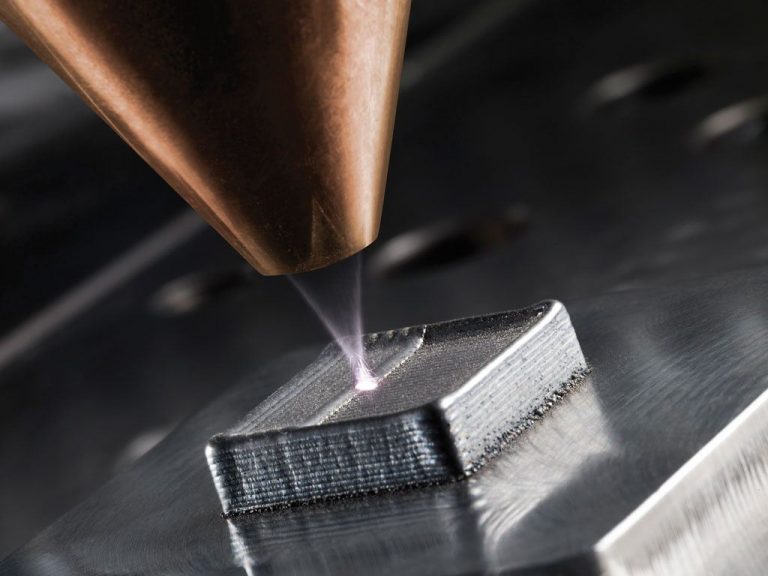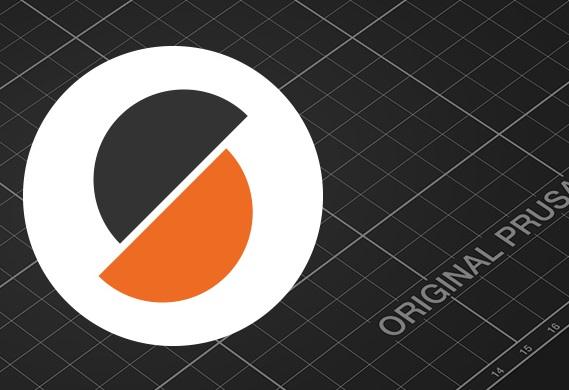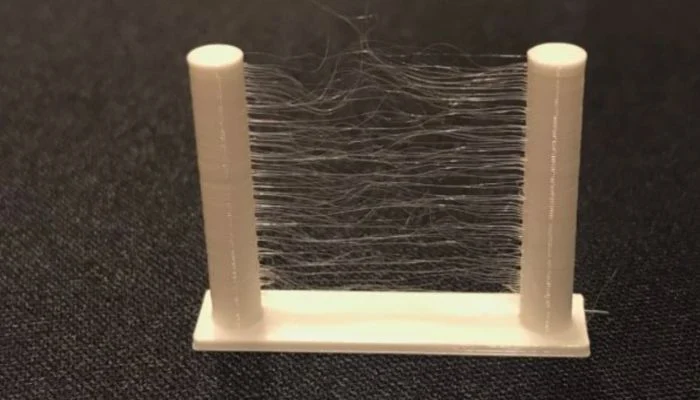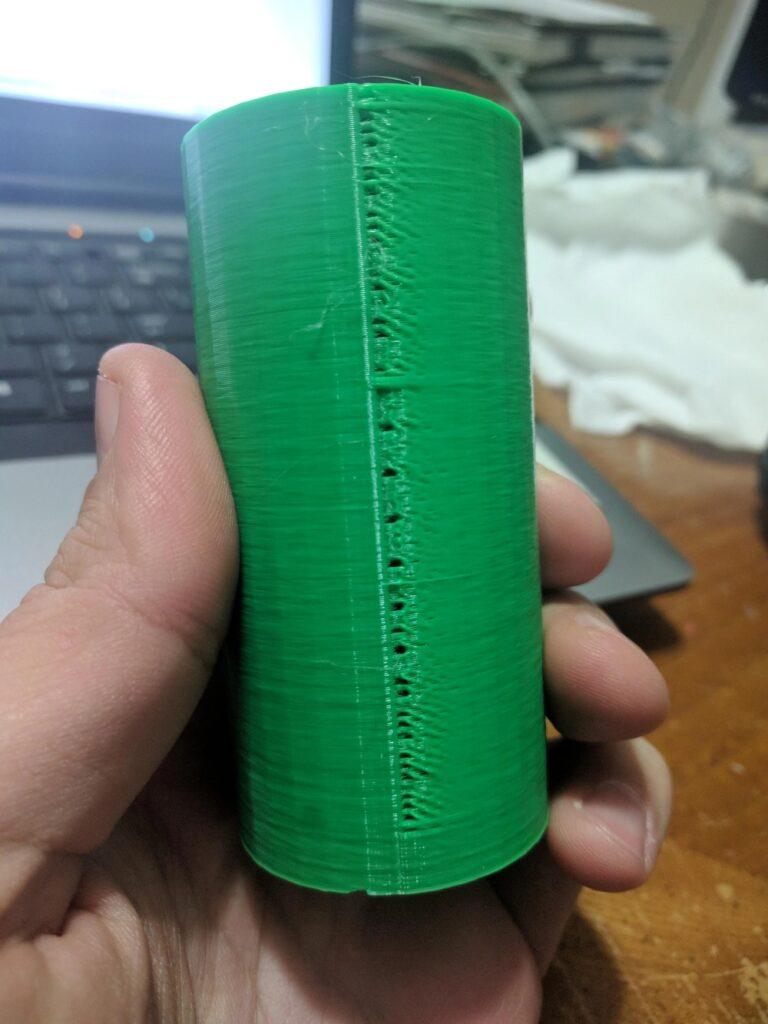Mastering PTFE Filament: Tips, Tricks, and Best Practices for Successful 3D Printing
Introduction
Since its debut, 3D printing has advanced significantly, with new materials being developed to fit a variety of applications and uses. Polytetrafluoroethylene (PTFE) filament is one such material that is becoming more and more popular in the realm of 3D printing. The world of additive manufacturing has a new facet thanks to PTFE filament, which is renowned for its remarkable performance. We’ll guide you through mastering PTFE filament. Learn how to optimize 3D printing results. Get advice on best practices, tips, and tricks. All in this blog article.
Our goal is to provide you with knowledge and abilities for PTFE filament in 3D printing. We will cover comprehending PTFE filament characteristics, printer setup, and print optimization. We will also discuss post-processing methods and creative uses of PTFE filament. This knowledge will help you succeed in your PTFE filament 3D printing projects.
Discover more about PTFE filament and its role in 3D printing from this guide. This post is a valuable resource for optimizing PTFE filament in your projects. You’ll learn about PTFE filament regardless of your experience with additive manufacturing. Maximize the potential of PTFE filament with the tips and tricks outlined in this guide. PTFE filament plays an essential role in the rapidly developing field of 3D printing. Use this in-depth guide to improve your understanding of PTFE filament for your projects. To master PTFE filament in 3D printing, let’s set out on this thrilling voyage.
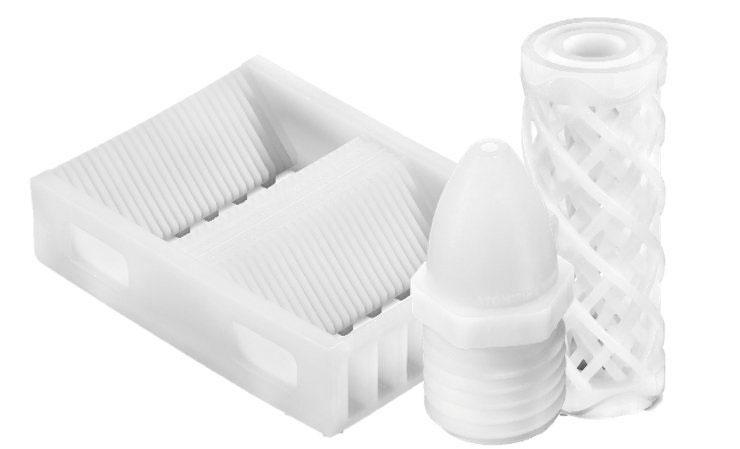
A brief overview of PTFE filament
PTFE is a high-performance plastic. It has unique characteristics. It is ideal for various applications. The polymer is adaptable. It’s the source of PTFE filament. PTFE filament has remarkable properties. Properties include chemical resistance, thermal stability, minimal friction, and electrical insulation. Because of these qualities, it is in high demand in sectors like electronics, aerospace, automotive, and biomedicine. PTFE filament has non-stick and non-reactive properties. It can handle challenging printing situations. Other materials may falter in those situations. PTFE filament offers new opportunities in additive manufacturing. As PTFE filament usage increases, 3D printers must comprehend its possibilities. Both amateur and professional 3D printers should learn how to realize their full potential.
Importance of mastering PTFE filament for 3D printing
The 3D printing industry has seen significant advancements in recent years, with an increasing focus on using specialized materials to meet diverse requirements. PTFE filament, with its remarkable properties, has emerged as an essential material for creating high-performance, functional parts across various sectors. Mastering PTFE filament is vital for anyone involved in 3D printing, as it opens up new avenues for innovation and problem-solving.
Understanding PTFE filament nuances enhances printed parts’ durability, performance, and appearance. Expertise in PTFE filament 3D printing leads to new business opportunities in industries. Mastering PTFE filament unlocks unattainable applications and drives further advancements in additive manufacturing. In essence, becoming proficient in PTFE filament 3D printing is not only a valuable skill for individuals but also an essential factor in shaping the future of the 3D printing industry as a whole.
Overview of the blog post’s content
This blog post provides insights and guidance on mastering PTFE filament for 3D printing. It covers a range of topics to help you understand this versatile material and its applications in additive manufacturing. The comprehensive guide ensures that you gain valuable insights and knowledge about PTFE filament. By exploring the topics in this post, you will become an expert in printing with PTFE filament. Whether you’re a beginner or an experienced user, this guide will offer useful tips and best practices for successful printing.
The content of the blog post is structured as follows:
- Background on PTFE Filament: Learn about the history and properties of PTFE, and how it compares to other common 3D printing materials.
- Preparing to Print with PTFE Filament: Discover how to choose the right 3D printer, handle and store PTFE filament, and set up your printer for optimal results.
- Tips for Printing with PTFE Filament: Uncover the best temperature settings, print bed adhesion techniques, and troubleshooting tips for common printing issues.
- Post-Processing Techniques for PTFE Filament Prints: Master the art of cleaning, finishing, bonding, and coloring PTFE printed parts.
- Best Practices for PTFE Filament 3D Printing: Delve into recommended slicer settings, optimize print speed and quality, and maintain your printer when using PTFE filament.
- Creative Applications and Use Cases for PTFE Filament: Explore the innovative applications of PTFE filament in various industries and how it’s changing the landscape of 3D printing.
Progress through each section of this post to master PTFE filament in 3D printing. Acquire the skills and knowledge needed for successful PTFE filament prints. Elevate your 3D printing capabilities with PTFE filament. A valuable resource for beginners and seasoned professionals in additive manufacturing.
Background on PTFE Filament
PTFE, or Polytetrafluoroethylene, is a synthetic fluoropolymer discovered in 1938 by Dr. Roy Plunkett. This unique material gained widespread recognition for its remarkable properties, such as its exceptional chemical resistance, low friction coefficient, high thermal stability, and electrical insulation capabilities. PTFE’s versatility led to its adoption in various applications, from non-stick cookware coatings to critical aerospace components.
PTFE filament offers exceptional properties in additive manufacturing. It’s more durable and offers enhanced performance than materials like PLA and ABS. It’s ideal for creating robust, functional parts for harsh environments and demanding applications. As the use of PTFE filament grows, professionals and enthusiasts need to understand its potential. Understanding the PTFE filament’s background is important to stay ahead in additive manufacturing.
History of PTFE and its applications
PTFE, or Polytetrafluoroethylene, was discovered serendipitously in 1938 by Dr. Roy Plunkett, a chemist at DuPont. The unique properties of this versatile polymer quickly garnered attention, and it was trademarked as Teflon in 1945. Over the years, PTFE has found widespread use across various industries. It has a remarkable combination of characteristics, such as high thermal stability. It also has exceptional chemical resistance, low coefficient of friction, and excellent electrical insulation properties. Notable applications of PTFE include non-stick cookware coatings and electrical wire insulation. PTFE is also used in gaskets and seals in the automotive and aerospace sectors. It is also used in components in the chemical processing industry.
In the medical field, PTFE has been used to create implants and catheters, benefiting from its biocompatibility and non-stick nature. PTFE filament is now used in 3D printing. It expands the range of applications. It enables creation of complex custom parts. The parts can withstand demanding conditions. They perform reliably in various environments. PTFE showcases immense value and versatility. It inspires innovation in additive manufacturing.
Properties of PTFE that make it suitable for 3D printing
PTFE filament boasts a unique set of properties that make it highly suitable for 3D printing applications. PTFE has exceptional chemical resistance. It keeps printed parts stable and unaffected by chemicals and corrosive substances. PTFE maintains its structural integrity and performance under extreme temperatures. It’s suitable for parts with significant temperature fluctuations. PTFE has a low friction coefficient, resulting in less wear and tear. PTFE-printed components have a longer lifespan and better performance in moving assemblies.
PTFE’s electrical insulation properties are excellent for electronic devices and high electrical demand environments. Its non-stick nature makes it ideal for 3D printing applications with unique requirements. Resistance to moisture and UV radiation also contributes to PTFE’s versatility in 3D printing. PTFE filament can create components that other materials cannot fulfill. These unique properties make PTFE filament a valuable material for various industries and applications.
Comparison of PTFE to other common filaments in the market
PTFE filament is distinct in the 3D printing market. It has unique properties and capabilities. It stands out compared to popular materials like PLA, ABS, and PETG. PLA is easy to use, biodegradable, and beginner-friendly. However, it lacks chemical resistance, thermal stability, and low friction properties. ABS is stronger and more heat-resistant than PLA. But it falls short in chemical resistance, electrical insulation, and non-stick properties. PTFE provides all these features.
PETG is another popular filament that combines the ease of printing PLA with the durability and heat resistance of ABS. However, it does not match PTFE’s ability to withstand exposure to harsh chemicals, maintain electrical insulation, and exhibit a low friction coefficient.
PTFE filament has unique properties that outperform other filaments in certain applications. These include chemical resistance, high-temperature stability, electrical insulation, and low friction. PTFE may not be suitable for all 3D printing projects and may require printer adjustments. However, it’s a valuable option for advanced and challenging applications. In summary, PTFE filament is a high-performance material worth considering for specific applications.
| Property | PTFE Filament | PLA | ABS | PETG |
|---|---|---|---|---|
| Chemical Resistance | Excellent | Poor | Moderate | Moderate |
| Thermal Stability | High | Low | Moderate | Moderate |
| Friction Coefficient | Low | Moderate | Moderate | Moderate |
| Electrical Insulation | Excellent | Moderate | Moderate | Moderate |
| UV Resistance | High | Low | Moderate | Moderate |
| Moisture Resistance | High | Low | Moderate | Moderate |
| Biodegradability | No | Yes | No | No |
| Ease of Printing | Moderate | Easy | Moderate | Easy |
| Tensile Strength | High | Moderate | High | High |
| Flexibility | Moderate | Low | Moderate | High |
| Printer Adjustments | Required | Minimal | Moderate | Minimal |
| Post-Processing Options | Limited | Moderate | High | Moderate |
Preparing to Print with PTFE Filament
Before diving into the world of PTFE filament 3D printing, it is crucial to properly prepare your 3D printer and workspace to ensure successful prints. Begin by selecting a 3D printer compatible with PTFE filament, as some machines may not support the required printing temperatures. Check your printer’s specifications and confirm that it can reach the necessary hot end and heated bed temperatures for PTFE printing.
Next, pay close attention to the storage and handling of PTFE filament. Since the material can be sensitive to moisture, store it in a cool, dry place, preferably with a desiccant. Before loading the filament, make sure to clean the extruder nozzle and print bed to avoid any contamination or adhesion issues. Adjust print bed and nozzle temperatures based on the manufacturer’s recommendations. Different PTFE filaments may require different temperature settings. Modify print speed, layer height, and cooling settings to optimize print quality. Warping and stringing are common issues that can be avoided with proper settings.
Finally, prepare the print bed surface to ensure proper adhesion. Using a specific bed material may be necessary for successful PTFE filament printing. Applying adhesion promoters can also help. Alternative methods like painter’s tape or glue sticks can work too. Careful printer and workspace preparation can significantly improve your chances of success. Enjoy the benefits of this versatile material by mastering the printing process.
Choosing the right 3D printer for PTFE filament
Selecting the right 3D printer for PTFE filament is a crucial step in ensuring successful prints and optimal results. Due to the material’s unique properties and printing requirements, not all 3D printers are compatible with PTFE filament. To begin, ensure that the 3D printer you choose is capable of reaching the necessary hot end and heated bed temperatures for PTFE printing, as this material requires higher temperatures than more common filaments like PLA or ABS. Furthermore, a printer with a high-quality all-metal hot end is recommended, as PTFE can cause wear on standard brass nozzles.
It’s also important to consider a printer with a robust and accurate temperature control system, as maintaining consistent temperatures throughout the printing process is essential for achieving the best results with PTFE filament. Finally, research the 3D printer’s compatibility with various slicer software, as some printers may require specific slicer settings or profiles to optimize PTFE filament printing. By selecting a 3D printer that meets these criteria, you can maximize the potential of PTFE filament and ensure a smooth and successful printing experience.
PTFE filament handling and storage tips
Proper handling and storage of PTFE filament play a significant role in ensuring the material’s performance and longevity. When working with PTFE filament, it is essential to handle the material with clean hands to prevent any contamination that could affect the printing quality. Additionally, since PTFE filament can be sensitive to moisture, it is vital to store the filament in a cool, dry place to prevent absorption of humidity from the air. A sealed container with a desiccant pack is an ideal storage solution, as it helps maintain a moisture-free environment and prolongs the filament’s lifespan.
To avoid tangling or damage to the filament, always rewind it neatly onto the spool after each use, and secure the loose end to prevent unraveling. When switching between different filaments, make sure to properly clean your printer’s extruder nozzle and print bed to avoid any cross-contamination or adhesion issues. Lastly, before loading the PTFE filament into your printer, check the filament for any signs of damage or inconsistencies, such as kinks, breaks, or uneven diameter. By following these handling and storage tips, you can maintain the integrity of your PTFE filament and ensure optimal printing results every time.
Necessary modifications to the 3D printer for printing with PTFE
Printing with PTFE filament may require certain modifications to your 3D printer to ensure optimal results and prevent potential issues. First and foremost, upgrade your printer’s hot end to an all-metal version, as PTFE’s higher printing temperatures can cause wear on standard brass nozzles. This upgrade will enhance heat resistance and ensure consistent extrusion. Next, ensure that your printer’s temperature control system is accurate and reliable, as maintaining stable hot end and heated bed temperatures is critical for successful PTFE printing.
You may also need to modify your printer’s cooling settings to prevent warping or deformation of the printed parts, as PTFE can be sensitive to rapid cooling. Adjusting the print speed and layer height may also be necessary to improve the quality and strength of your PTFE prints. Finally, prepare the print bed surface to ensure proper adhesion; this may involve using a specific bed material, applying adhesion promoters, or experimenting with alternative methods like painter’s tape or glue sticks. By making these modifications to your 3D printer, you can effectively optimize the printing process for PTFE filament and achieve the best possible results.
Proper calibration and set up for successful PTFE 3D printing
Achieving successful PTFE 3D prints requires careful calibration and set-up of your 3D printer. Begin by ensuring that the printer’s hot end and heated bed temperatures are set according to the manufacturer’s recommendations for your specific PTFE filament. PTFE usually requires higher temperatures than standard filaments like PLA or ABS, so make sure your printer can reach and maintain these temperatures consistently. Level the print bed accurately to ensure that the nozzle is at the correct height from the bed surface, preventing adhesion issues or uneven layers. Adjust the print speed, layer height, and cooling settings according to the material’s requirements and your desired print quality.
Slower print speeds and lower cooling settings may be necessary for PTFE to prevent warping or deformation. Calibrate your printer’s extrusion multiplier or flow rate to ensure consistent extrusion of the filament, avoiding over- or under-extrusion issues that could impact the print’s strength and appearance. Lastly, fine-tune the retraction settings to minimize stringing and oozing during the printing process. By carefully calibrating and setting up your 3D printer for PTFE filament, you can optimize the printing process and achieve successful, high-quality prints.
Tips for Printing with PTFE Filament
- Adhesion Techniques:
- Use a build plate material that promotes adhesion, such as PEI or a textured glass surface.
- Apply adhesion promoters like glue sticks, hairspray, or specialized 3D printing adhesives.
- Experiment with painter’s tape or Kapton tape to provide a suitable printing surface.
- Temperature Management:
- Ensure your printer can achieve and maintain the recommended hot end and heated bed temperatures for PTFE filament.
- Monitor temperature stability during prints, as fluctuations can cause warping or poor layer adhesion.
- Printing Speed and Layer Height:
- Adjust print speed and layer height settings to optimize print quality and strength.
- Slower print speeds may be necessary for PTFE filament to prevent warping or deformation.
- Fine-tune the layer height to balance print speed with surface quality and detail.
- Cooling Settings:
- Modify cooling settings to prevent rapid cooling, which can lead to warping or deformation of PTFE prints.
- Experiment with different cooling fan speeds and configurations to find the ideal balance for your specific printer and PTFE filament.
- Retraction Settings:
- Adjust retraction settings to minimize stringing and oozing during the printing process.
- Experiment with retraction distance and speed to find the optimal settings for your printer and PTFE filament.
- Extrusion Multiplier and Flow Rate:
- Calibrate your printer’s extrusion multiplier or flow rate to ensure consistent extrusion of the filament.
- Proper calibration helps avoid over- or under-extrusion issues that could impact the print’s strength and appearance.
By following these tips and making necessary adjustments, you can improve your success rate with PTFE filament 3D printing and create high-quality, functional parts that fully utilize the unique properties of this versatile material.
How to avoid common printing problems like warping and stringing
Warping
Warping occurs when the printed part’s edges lift and curl away from the print bed due to uneven cooling and material shrinkage. To minimize warping, start by ensuring proper bed adhesion using techniques like applying adhesive agents, using a suitable build plate material, or experimenting with painter’s tape. Next, maintain consistent heated bed temperatures throughout the print to reduce temperature fluctuations that can exacerbate warping. Slower print speeds can also help alleviate warping, as they allow for more even cooling and material deposition. Enclosing the printer or using a temperature-controlled print chamber can further stabilize the printing environment and minimize warping by reducing drafts or temperature variations.
Stringing
Stringing is the appearance of thin strands or “strings” of filament between different parts of a print, caused by oozing or leaking of the material during travel moves. To reduce stringing, fine-tune your printer’s retraction settings, which help pull the filament back into the nozzle during non-printing movements. Adjust the retraction distance and speed to find the optimal combination that minimizes stringing without causing other issues like under-extrusion. Additionally, lowering the print temperature may reduce stringing by decreasing the material’s viscosity and flow rate. However, be careful not to reduce the temperature too much, as this can lead to poor layer adhesion or incomplete extrusion. Finally, optimizing the travel path and reducing unnecessary travel moves in the slicer software can further help minimize stringing.
Poor Layer Adhesion
This occurs when layers of the print do not bond together properly, resulting in weak prints or complete separation between layers. To address this issue, ensure that your printer is set to the correct temperature for the filament being used, as inadequate temperatures can prevent proper bonding between layers.
Clogged Nozzle
A clogged nozzle can lead to inconsistent extrusion, under-extrusion, or even a complete halt in extrusion during printing. To prevent clogging, ensure that your filament is clean and free of debris, and regularly clean or replace your nozzle. Using an all-metal hot end can also help prevent clogging, particularly when working with high-temperature materials like PTFE.
Inconsistent Extrusion
Inconsistent extrusion can cause print defects such as gaps, blobs, or uneven layers. To address this issue, calibrate your printer’s extrusion multiplier or flow rate, and ensure that your filament is of consistent diameter and quality.
Over-Extrusion
This issue occurs when too much filament is extruded during printing, leading to messy prints, poor surface quality, and dimensional inaccuracies. To resolve this problem, calibrate your extrusion multiplier or flow rate, and ensure that your slicer settings are accurate for the filament and printer being used.
Poor Surface Quality
Poor surface quality can result from a variety of factors, such as incorrect print speed, layer height, or nozzle diameter. Experiment with different settings to find the optimal combination for achieving the desired surface finish.
Bridging and Overhang Issues
These problems arise when printing structures that extend horizontally without support, like bridges and overhangs. To minimize these issues, adjust your cooling settings, print speed, and layer height to optimize the material’s ability to support itself during printing. You may also need to use support structures to ensure proper print quality in more complex models.
By understanding and addressing these potential problems, you can significantly improve your 3D printing experience and achieve better results with PTFE filament or any other material you choose to print with.
Post-Processing Techniques for PTFE Filament Prints
Cleaning and Support Removal
- Carefully remove any support structures, rafts, or brims from the printed part using pliers, tweezers, or a hobby knife.
- Be cautious not to damage the print itself while removing these elements.
- Clean the printed part using a soft brush or compressed air to remove any debris, dust, or loose filament strands.
Sanding and Smoothing
- PTFE filament prints can be sanded to achieve a smoother surface finish.
- Start with coarser grit sandpaper (around 220 grit) and progress to finer grits (up to 1000 grit) for a polished appearance.
- Use a sanding block or an electric sander for even sanding results.
- Keep in mind that PTFE is resistant to many solvents, so smoothing techniques like acetone vapor smoothing, commonly used for ABS, will not work on PTFE prints.
Filling and Bonding
- For prints with gaps or seams, use a PTFE-compatible filler or adhesive to fill in the imperfections.
- PTFE can be challenging to bond due to its non-stick properties. You may need to use specialized adhesives, like epoxy or PTFE-specific glues, to achieve a strong bond between parts.
- Lightly sand the surfaces to be bonded for better adhesion.
Painting and Finishing
- PTFE filament prints can be painted or finished using compatible paints and coatings.
- Before painting, clean the print thoroughly and apply a primer suitable for PTFE.
- Use a paint that is specifically designed for PTFE or plastics with low surface energy, such as certain epoxy or polyurethane-based paints.
- Apply multiple thin coats of paint, allowing each coat to dry before adding the next one.
Annealing and Heat Treatment
- PTFE prints can be annealed or heat-treated to improve their mechanical properties and dimensional stability.
- Anneal the printed part in an oven or temperature-controlled environment at a specific temperature and duration, as recommended by the filament manufacturer.
- Monitor the process carefully to avoid overheating or warping the print.
By utilizing these post-processing techniques, you can enhance the appearance, functionality, and overall quality of your PTFE filament prints, allowing you to fully capitalize on the material’s unique properties and produce professional-grade, finished parts.
Guidelines for removing PTFE prints from the build plate
Removing PTFE prints from the build plate can be challenging due to the material’s unique properties, but following some guidelines can help ensure successful and damage-free removal. First, allow the printed part and build plate to cool down completely before attempting to remove the print. This cooling period will help reduce the risk of warping or deformation caused by thermal stress. Next, use a thin, flexible spatula or scraper to carefully work your way under the edges of the print, gently lifting it from the build plate.
Take care not to apply excessive force or pry the print too aggressively, as this can lead to damage or breakage of the part. If the print is still difficult to remove, try applying a small amount of isopropyl alcohol or another compatible solvent at the interface between the print and the build plate, which can help loosen the adhesion. By following these guidelines, you can safely and effectively remove PTFE prints from the build plate, ensuring the integrity of your finished parts.
Best Practices for PTFE Filament 3D Printing
To achieve successful prints with PTFE filament, it’s essential to follow best practices that cater to the unique properties of this material. Begin by selecting a suitable 3D printer with an all-metal hot end and accurate temperature control systems, as PTFE requires higher printing temperatures than standard filaments. Prepare the print bed surface to ensure proper adhesion, using techniques like applying adhesion promoters or experimenting with different bed materials. Calibrate your printer’s extrusion multiplier, flow rate, and retraction settings to optimize the printing process and prevent issues like inconsistent extrusion or stringing.
Take the time to fine-tune your slicer settings, adjusting print speed, layer height, and cooling settings to achieve the desired print quality, and strength, and minimize warping. During the printing process, monitor temperature stability and ensure that your printer maintains consistent hot end and heated bed temperatures. After completing the print, follow proper guidelines for removing prints from the build plate and post-processing techniques like sanding, painting, or annealing to enhance the appearance and functionality of your PTFE parts.
Recommended slicer settings for PTFE filament
Selecting the appropriate slicer settings for PTFE filament is crucial for achieving successful prints. Begin by setting the hot end temperature according to the manufacturer’s recommendations, usually within the range of 320-340°C, and the heated bed temperature between 100-120°C to ensure proper adhesion and layer bonding. Choose a print speed that balances quality and print time, typically between 30-50 mm/s, as slower speeds can help minimize warping and ensure even material deposition. Set the layer height to match your desired surface finish and print strength, with a common range being 0.1-0.3mm.
Adjust the cooling settings to provide adequate cooling without causing rapid temperature changes that could lead to warping; you may need to use a reduced fan speed or even turn off the cooling fan for certain parts of the print. Lastly, fine-tune retraction settings to minimize stringing, experimenting with retraction distance and speed to find the optimal combination for your printer and PTFE filament. By using these recommended slicer settings as a starting point, you can optimize your 3D printing process and achieve successful, high-quality prints with PTFE filament.
How to optimize print speed and quality
Achieving a balance between print speed and quality is essential for an efficient and successful 3D printing experience. Begin by selecting an appropriate layer height for your desired print resolution; smaller layer heights yield higher resolution and better surface finish but take longer to print. Adjust print speed settings in your slicer software, finding a balance that maintains print quality without compromising efficiency. Faster speeds can lead to a quicker print time, but they may also cause issues like poor layer adhesion, stringing, or uneven extrusion. Slower speeds can improve print quality by allowing for better material deposition and more even cooling, but they increase the overall print time.
Experiment with different infill patterns and densities, choosing options that provide adequate structural support without using excessive material or adding to print time. Utilize adaptive layer height settings, if available in your slicer, to automatically adjust layer heights in specific areas of the print, improving quality where needed while maintaining faster print times in less critical sections. By carefully adjusting and optimizing these parameters, you can strike the perfect balance between print speed and quality, ensuring a successful and efficient 3D printing experience.
Importance of regular printer maintenance when using PTFE
Regular printer maintenance is crucial when using PTFE filament due to its unique properties and the higher printing temperatures required. Consistent maintenance helps ensure reliable and high-quality prints while prolonging the lifespan of your 3D printer. Regularly inspect and clean the nozzle, hot end, and extruder assembly to prevent clogging, as PTFE’s high melting point can cause residue build-up that affects extrusion consistency. Lubricate the printer’s moving parts, such as bearings, rods, and lead screws, to minimize wear and friction caused by the extended operation at elevated temperatures.
Monitor the printer’s temperature sensors and calibrate them as needed to ensure accurate and consistent temperature control during printing. Additionally, check the print bed’s adhesion and leveling, making adjustments as necessary to maintain optimal performance. By conducting regular printer maintenance when using PTFE filament, you can prevent potential issues, enhance print quality, and extend the life of your 3D printer, ensuring a seamless and efficient printing experience.
Ensuring safety when printing with PTFE filament
Due to the special characteristics of PTFE filament and its higher printing temperatures, safety must always come first while printing with it. To start, make sure the printing space has enough ventilation to get rid of any gases that might be produced when printing. Although PTFE is thought to be non-toxic, vapors created at high temperatures may be dangerous if inhaled in large doses or for a lengthy period of time. To further decrease exposure to fumes, choose a printer with an enclosed build chamber and, if practical, include a filtration system. Because to the high printing temperatures, keep the printer away from anything that could catch fire.
To prevent burns or other injuries when handling hot components, wear the proper personal protective equipment (PPE), such as heat-resistant gloves. Check the electrical parts and wiring of your printer frequently for wear, heat damage, or loose connections that could cause a fire or malfunctions. While printing with PTFE filament, you may reduce potential risks and provide a safe and effective 3D printing environment by according to these safety recommendations.
Creative Applications and Use Cases for PTFE Filament
Industries of Aviation and Space
The aerospace and aviation industries can benefit from PTFE filament because of its high heat resistance, minimal friction, and chemical resistance. Fuel lines, connectors, and seals made of PTFE can tolerate extremely high temperatures and resist chemical deterioration in aircraft systems. For instance, PTFE has been used to make specific gaskets and seals for aviation engines, ensuring dependable and durable operation.
Automotive Industry
The durability and low friction of PTFE filament make it ideal for the automobile industry, which uses it to make high-performance gaskets, bushings, and bearings. These parts can withstand challenging operating conditions, minimize damage, and lengthen the lifespan of vehicle systems. The heat resistance and low friction qualities of PTFE have been utilised in the production of lightweight, high-performance brake systems, such as those used in race vehicles.
Pharmaceutical and Medical Sectors
Because it is chemically and biologically inert, PTFE filament is the perfect material for use in pharmaceutical and medical applications. Implants, catheters, and surgical tools that need great chemical resistance and little friction can be made with PTFE. Stents, which are put into blood vessels to avoid blockages and improve blood flow, are one application of PTFE in the real world.
Industries of Food and Beverage
The food and beverage industries can employ PTFE filament since it is non-stick and chemically resistant. In parts of food processing machinery like seals, gaskets, and mixers where they must survive contamination, be simple to clean, and endure abrasive cleaning solutions, PTFE components can be employed. Non-stick baking trays and molds have been produced using PTFE, which increases efficiency and decreases the need for additional lubrication.
Telecommunications and Electronics
Because of its moisture resistance and electrical insulating qualities, PTFE filament is a good material for electronic and telecom applications. PTFE can be used to make insulating parts such wire housings, connectors, and printed circuit boards, where it performs admirably under tough conditions. The creation of high-performance coaxial cables, which are employed in cutting-edge communication systems because of their superior signal transmission capabilities, is an example of how PTFE is used in electronics.
These inventive uses and applications highlight the adaptability of PTFE filament across numerous industries, showing its special qualities and capacity to create high-performance, long-lasting components that meet a variety of criteria.
Conclusion
In conclusion, PTFE filament offers a unique combination of properties, such as heat resistance, low friction, chemical inertness, and electrical insulation, making it a valuable material for 3D printing applications across numerous industries. Mastering the printing process with PTFE filament requires understanding its characteristics, selecting the appropriate equipment, and fine-tuning printer settings. By following best practices, ensuring safety, and conducting regular maintenance, you can harness the full potential of PTFE filament to create high-quality, durable parts that cater to a wide range of applications, from aerospace to medical devices. As 3D printing technology continues to advance, the opportunities for utilizing PTFE filament will undoubtedly expand, enabling further innovation and unlocking new possibilities in design, engineering, and manufacturing.
The key takeaways for mastering PTFE filament in 3D printing
- Understand PTFE filament’s unique properties: Recognize the characteristics that make PTFE filament suitable for specific applications, such as heat resistance, low friction, chemical inertness, and electrical insulation.
- Select the right 3D printer: Choose a 3D printer with an all-metal hot end and accurate temperature control systems, as PTFE requires higher printing temperatures than standard filaments.
- Optimize slicer settings: Fine-tune your slicer settings to achieve the desired print quality, and strength, and minimize warping. Adjust parameters like print speed, layer height, and cooling settings.
- Printer calibration and setup: Calibrate your printer’s extrusion multiplier, flow rate, and retraction settings to optimize the printing process and prevent issues like inconsistent extrusion or stringing.
- Proper maintenance and safety: Conduct regular printer maintenance and follow safety guidelines when using PTFE filament to ensure reliable and high-quality prints while prolonging the lifespan of your 3D printer.
- Troubleshoot common printing problems: Understand how to avoid issues like warping and stringing during the printing process, and learn effective techniques for post-processing PTFE filament prints.
- Explore creative applications: Utilize PTFE filament across various industries, from aerospace to medical devices, and understand its potential in creating high-performance, durable components.
By mastering these key takeaways, you’ll be well-equipped to successfully print with PTFE filament, unlocking the full potential of this versatile material for your 3D printing projects.
The future of PTFE filament and its potential impact on the 3D printing industry
PTFE filament is set to play a bigger role in the business as 3D printing technology develops and matures. It is a desirable material for a variety of applications in a wide range of industries due to its distinctive combination of qualities, which include heat resistance, low friction, chemical inertness, and electrical insulation. We may anticipate future developments in PTFE filament production, which will enhance printability and material properties, as the demand for high-performance materials rises. These developments may make it possible for a wider range of businesses to use PTFE filament, opening up new opportunities in production, engineering, and design. As a result, the 3D printing business might advance and PTFE filament could become a more useful and adaptable material in the additive manufacturing environment.
Encouragement to experiment and explore the possibilities with PTFE filament
PTFE filament offers a unique set of properties that opens up numerous possibilities for 3D printing applications. As technology advances, the potential for utilizing PTFE filament will only expand, enabling further innovation and unlocking new possibilities in design, engineering, and manufacturing. It is essential to encourage experimentation and exploration with PTFE filament to realize its full potential, develop new techniques, and push the boundaries of what is possible. Don’t be afraid to try new settings or techniques, test different designs or applications, and learn from the outcomes. By experimenting and exploring the possibilities with PTFE filament, we can create unique and innovative solutions that cater to a wide range of industries and applications. So, let your creativity run wild and discover the endless possibilities of PTFE filament in 3D printing.
How to Print with PTFE Filament
Time needed: 2 hours.
By following these steps, you can successfully print with PTFE filament and create high-quality, durable parts for a wide range of applications.
- Select the right 3D printer
Choose a 3D printer with an all-metal hot end and accurate temperature control systems, as PTFE requires higher printing temperatures than standard filaments.
- Prepare your printer
Ensure that your printer is clean, calibrated, and in good working order before printing.
- Slice your model
Use slicer software to prepare your model for printing, adjusting parameters like print speed, layer height, and cooling settings.
- Load PTFE filament
Follow the manufacturer’s instructions to load PTFE filament into your printer.
- Set printer temperature
Set the printer temperature to the recommended temperature for PTFE filament.
- Start printing
Begin printing your model, monitoring the print for any issues like warping or stringing.
- Post-processing
Once the print is complete, allow it to cool and then remove it from the build plate. Use any necessary post-processing techniques to achieve the desired finish.
- Printer maintenance
Conduct regular printer maintenance, such as cleaning the nozzle and lubricating the moving parts, to ensure reliable and high-quality prints.
- Experiment and explore
Encourage experimentation and exploration with PTFE filament to discover new possibilities and applications. Try different settings and designs to optimize your prints and unlock PTFE’s full potential.
FAQs
PTFE filament requires higher printing temperatures than standard filaments and may require some adjustments to your printer’s settings. However, with proper preparation and maintenance, PTFE filament is straightforward to print with.
Yes, PTFE filament is non-toxic and chemically inert, making it safe for use in food contact applications.
Mixing PTFE filament with other filaments is not recommended, as it may affect the material’s properties and compromise its performance.
PTFE filament cannot be recycled in the traditional sense due to its chemical properties. However, some manufacturers offer recycling programs that can convert used PTFE products into raw materials for new products.
PTFE filament is typically more expensive than standard filaments due to its unique properties and specialized manufacturing processes. However, its durability and high performance make it a worthwhile investment for certain applications.
Store PTFE filament in a dry, cool place, away from direct sunlight, heat sources, and moisture. Consider using an airtight container or vacuum-sealed bag to preserve the filament’s properties.


